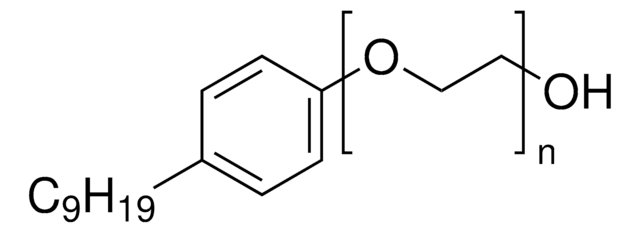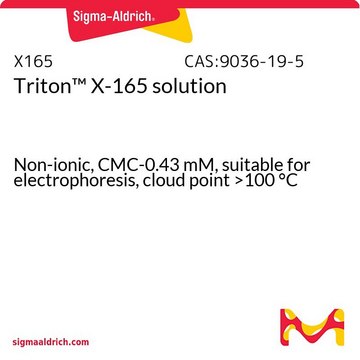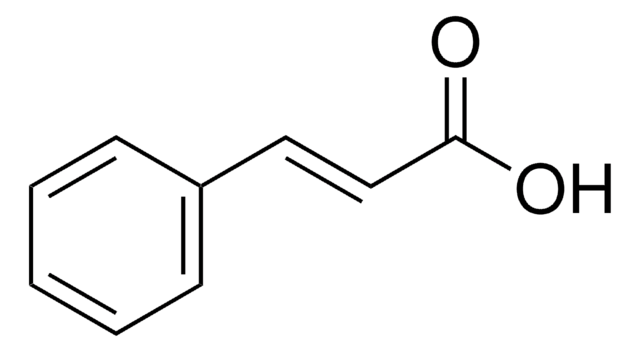238589
IGEPAL® CA-720
average Mn ~735
Sinónimos:
Polyoxyethylene (12) isooctylphenyl ether, Polyoxyethylene (12) octylphenyl ether, branched
About This Item
Productos recomendados
descripción
non-ionic
Nivel de calidad
mol peso
average Mn ~735
índice de refracción
n20/D 1.487 (lit.)
densidad
1.104 g/mL at 25 °C (lit.)
HLB
14
cadena SMILES
CC(C)(C)CC(C)(C)c1ccc(OCCOCCOCCOCCOCCOCCOCCO)cc1
InChI
1S/C28H50O8/c1-27(2,3)24-28(4,5)25-6-8-26(9-7-25)36-23-22-35-21-20-34-19-18-33-17-16-32-15-14-31-13-12-30-11-10-29/h6-9,29H,10-24H2,1-5H3
Clave InChI
HNLXNOZHXNSSPN-UHFFFAOYSA-N
Descripción general
Aplicación
- as a component in reverse transcription (RT) mix for the recovery of variable heavy-light pairs (VH/VL) from sorted cells
- in critical commercial assays
- a surfactant in electrokinetics (EK) for the removal of organic contaminants
- as a component of a binary mixture of Igepal and toluene to determine its density (ρ) and dynamic viscosity (η) to study the nature of the molecular interactions present in surfactants and cosurfactant mixtures
Características y beneficios
- Improves system stability and durability
- Exhibit good wetting properties
Información legal
Palabra de señalización
Danger
Frases de peligro
Consejos de prudencia
Clasificaciones de peligro
Acute Tox. 4 Oral - Aquatic Acute 1 - Aquatic Chronic 1 - Eye Dam. 1 - Skin Irrit. 2
Código de clase de almacenamiento
10 - Combustible liquids
Clase de riesgo para el agua (WGK)
WGK 3
Punto de inflamabilidad (°F)
483.8 °F - closed cup
Punto de inflamabilidad (°C)
251 °C - closed cup
Elija entre una de las versiones más recientes:
¿Ya tiene este producto?
Encuentre la documentación para los productos que ha comprado recientemente en la Biblioteca de documentos.
Los clientes también vieron
Nuestro equipo de científicos tiene experiencia en todas las áreas de investigación: Ciencias de la vida, Ciencia de los materiales, Síntesis química, Cromatografía, Analítica y muchas otras.
Póngase en contacto con el Servicio técnico









